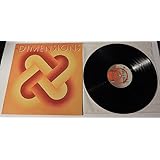Worldwide, an estimated 2.5 billion people enjoy street food daily, showcasing a rich tapestry of culinary traditions that connect us across continents. This vibrant global phenomenon often highlights local specialties, much like the tempting glimpses of Anna famous bonda we see above. Street food offers an unparalleled window into a region’s authentic flavors and daily life, providing a quick, delicious, and often affordable meal option for millions. Exploring these culinary delights can truly broaden one’s understanding of different cultures and their unique gastronomic heritage.
However, short videos, while captivating, often leave enthusiasts yearning for more depth and context about these intriguing dishes. The visual appeal of a perfectly fried snack or a bustling food stall sparks curiosity, prompting many to seek out the history, ingredients, and preparation methods behind such iconic treats. This exploration goes beyond mere taste, delving into the cultural significance and the traditional techniques that make each dish special. Understanding the nuances of street food allows for a greater appreciation of its place in the local community and its journey through time.
Unveiling the Layers of Indian Bonda: A Street Food Staple
Bonda represents a beloved category of Indian snacks, particularly prominent in the southern states, where it has achieved an iconic status. This savory fritter is often enjoyed as a quick breakfast item or a delightful evening snack alongside a hot cup of chai. Its versatility is truly remarkable, featuring numerous regional variations that reflect the diverse culinary landscape of India. The warm, comforting nature of bonda makes it a cherished part of everyday life for many, symbolizing warmth and hospitality.
While the video might showcase a specific rendition, the term “bonda” itself encompasses a fascinating array of textures and tastes, primarily distinguished by its core ingredients. These differences are not merely superficial; they represent centuries of culinary innovation and adaptation within local communities. Each variant offers a unique experience, from the crunchy exterior to the soft, flavorful interior, providing a delightful exploration for any food enthusiast. Understanding these distinctions helps appreciate the depth of Indian street food culture.
Medu Bonda: The Urad Dal Classic
One of the most widely recognized forms of this delightful snack is Medu Bonda, originating from South India, particularly Karnataka and Tamil Nadu. Crafted predominantly from ground urad dal (black gram lentils), this version boasts a distinctive donut-like shape with a fluffy, airy texture. The batter is meticulously prepared by soaking and grinding the lentils into a smooth paste, then seasoned with green chilies, ginger, curry leaves, and sometimes onions. This meticulous preparation ensures a truly authentic and flavorful experience, cherished by many for generations.
Despite its seemingly simple ingredients, achieving the perfect Medu Bonda requires a delicate balance of fermentation and frying technique to ensure a crispy exterior and a soft, porous interior. It is traditionally served with tangy coconut chutney and a bowl of hot sambar, making it an incredibly satisfying combination. The contrasting flavors and textures of the bonda with its accompaniments create a memorable culinary experience, highlighting the ingenuity of South Indian cuisine. This staple continues to be a favorite among both locals and visitors alike.
Aloo Bonda: The Hearty Potato Fritter
In contrast to its lentil-based cousin, Aloo Bonda, or potato bonda, offers a wonderfully satisfying and carb-rich alternative, widely enjoyed across various regions. This popular variant features a spiced potato filling, often seasoned with mustard seeds, turmeric, ginger, and sometimes peas, all encased within a gram flour (besan) batter. The combination of earthy potatoes and fragrant spices creates a deeply comforting and flavorful experience that appeals to a broad palate. It serves as a testament to the versatility of simple ingredients.
The preparation involves boiling and mashing potatoes, then sautéing them with an aromatic blend of spices before shaping them into small balls. These potato balls are then dipped into a thick besan batter and deep-fried until golden brown and crispy, resulting in a delightful crunch with every bite. Aloo Bonda is frequently enjoyed with a spicy mint chutney or a sweet tamarind chutney, providing a perfect contrast to its savory core. Its widespread appeal speaks volumes about its delicious simplicity and comforting nature.
The Cultural Significance and Evolution of Bonda
The widespread appeal of bonda extends far beyond its delicious taste, deeply embedding itself within the social and cultural fabric of Indian life. It serves as a common denominator at family gatherings, festive celebrations, and casual roadside stalls, embodying a sense of community and shared joy. This versatile snack often signifies hospitality, being offered to guests as a welcoming gesture, and symbolizing the warmth of traditional Indian households. Its presence at various events underscores its integral role in daily life.
Historically, bonda’s origins can be traced back several centuries, evolving from simple fried dough balls into the diverse array of fritters we appreciate today. The continuous adaptation of ingredients and preparation methods reflects regional culinary distinctiveness and the influence of local produce. While the precise lineage of “Anna famous bonda” might be specific to a particular vendor or region, its popularity likely stems from a perfected recipe or a unique serving style. This evolution highlights a dynamic culinary tradition that continues to thrive and innovate.
Crafting Your Own Authentic Bonda at Home
Recreating the magic of street-style bonda in your own kitchen is a rewarding experience, allowing you to savor authentic flavors with a personal touch. While the specific recipe for Anna famous bonda may remain a closely guarded secret, the general principles of making delicious bonda are accessible to home cooks. The process typically involves preparing the batter or filling, seasoning it generously, and then carefully deep-frying until golden brown. Mastery of these steps can transform your kitchen into a South Indian street food haven.
For Medu Bonda, begin by soaking urad dal for several hours, then grind it into a fine paste with minimal water, ensuring a thick consistency. Incorporate chopped green chilies, ginger, curry leaves, and a pinch of asafoetida, then allow the batter to ferment slightly for optimal fluffiness. In contrast, for Aloo Bonda, boil and mash potatoes, then sauté them with mustard seeds, turmeric, and finely chopped onions for a flavorful filling. Forming the fritters and frying them to perfection are crucial steps in achieving that desired street food texture and taste. Experimentation with spices allows for customization to suit individual preferences.
Serving Suggestions and Pairings
Bonda is rarely enjoyed in isolation; its true charm often comes alive when paired with complementary accompaniments that enhance its flavor profile. A classic combination for Medu Bonda is undeniably fresh coconut chutney, offering a refreshing counterpoint to the savory fritter. This chutney typically features grated coconut, green chilies, ginger, and a tempering of mustard seeds and curry leaves for an aromatic finish. The coolness of the chutney beautifully balances the warmth of the bonda.
Furthermore, a steaming bowl of sambar, a lentil-based vegetable stew, is another quintessential pairing for Medu Bonda, creating a wholesome and satisfying meal. For Aloo Bonda, a spicy green chutney made with mint and coriander, or a tangy tamarind chutney, provides an excellent flavor contrast. These pairings elevate the simple snack into a complete culinary experience, reflecting the thoughtful artistry of Indian cuisine. Enjoying these combinations replicates the authentic street food experience of Anna famous bonda and its many delicious variations.











